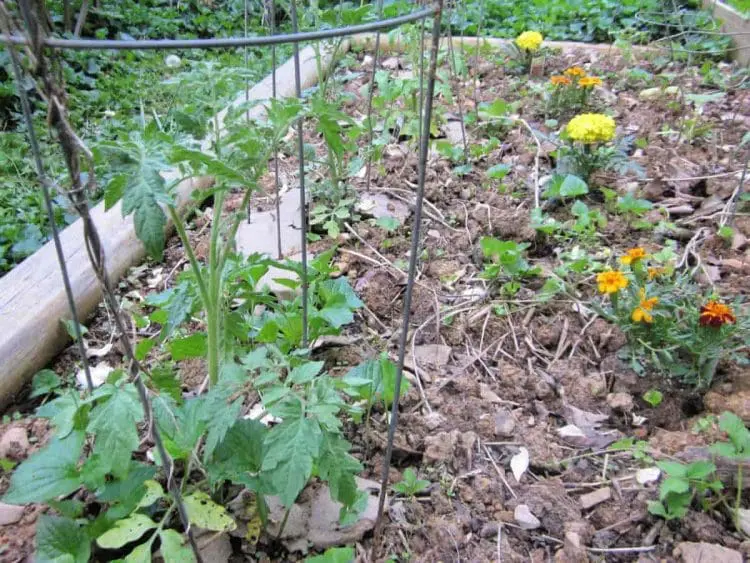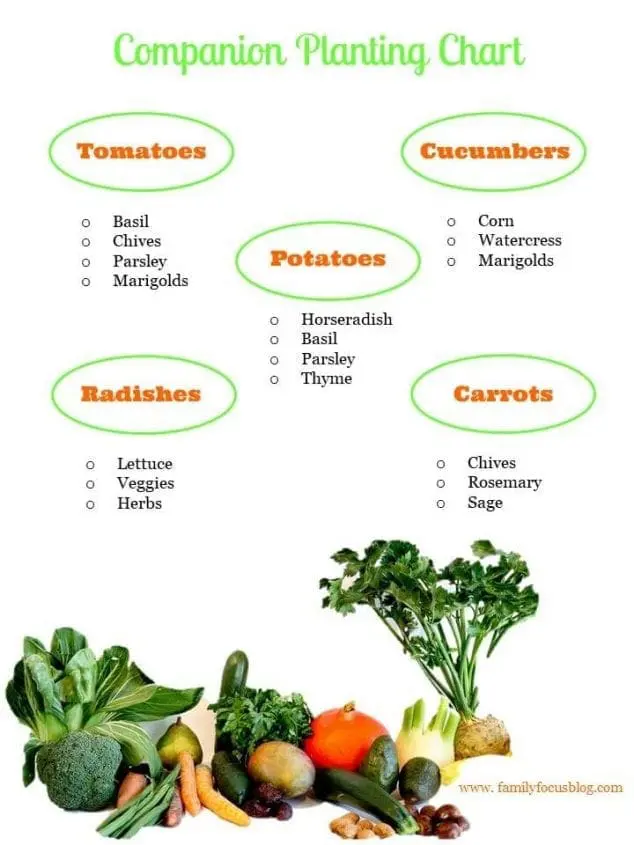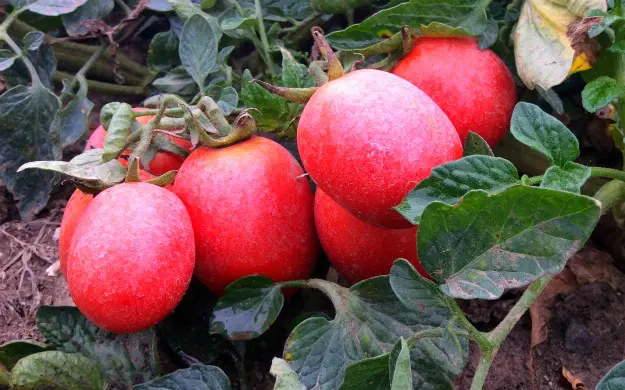Just like people enjoy having a good companion who enriches their lives plants feel similarly. Plants enjoy compatible neighbors next to whom a healthy existence can be easily achieved. When this phenomenon occurs naturally in the wild it’s simply the result of certain species being in the right place at the right time. When gardeners integrate it into their agricultural setting its called companion planting for pest control. It is a great tool for the common vegetable garden, especially when gardening with your children. I will also share a companion planting vegetables chart to help you decide what to plant next to certain vegetables to repel bugs.
What Is Companion Planting?
Companion planting literally refers to what plants you plant next to what plants. Gardeners over time have come to notice the benefits of pairing certain plants together in the garden.
Centuries ago agriculturalists developed a system of companion planting as they discovered plants assisted each other in various ways including providing nutrients to soil and ensuring ample water reserves. They also discovered that some plants warded off unwanted pests.

Natural Garden Companion Planting For Pest Control
While soil and water are important, being able to provide natural garden pest control interested farmers greatly because if anything, insects can be one of the most damaging factors to a crop.
Eventually, as chemical pesticides became widely used over the past century companion planting fell by the wayside. However, over time two problems became apparent that brought Companion Planting back into popularity. The first was the staggering health hazards associated with noxious chemicals including cancer and reproductive problems. The other was the fact many deadly substances don’t discriminate. This means that just like when an exterminator sprays a house and the poison doesn’t single out good bugs from bad ones the same holds true for chemicals used on crops.
With Companion Planting, the bad pests will be annoyed enough by certain scents to buzz off while good bugs will be attracted to your yard. Now you may be wondering does it truly matter what kinds of bugs visit your garden and the answer is yes! Unwanted insects including spider mites, black beetles, aphids, tomato hornworms, earwigs, and slugs are examples of insects which love to eat leaves and more. Good insects include honey bees, lady hugs, dragon flies, and lacewings, all of which have special purposes but also act as predators against many of the above.
Companion planting is a great alternative to man made chemical pest control because it provides natural garden pest control. Companion planting is a humane, safe form of pest control that keeps the good bugs around and doesn’t require killing the unwanted ones which is one of the important Organic Gardening Tips.
Fortunately a lot of research has been compiled on the subject of Companion Planting. In fact, there are many great resources to choose from. A really great book on the topic is Plant Partners- here is my affiliate Amazon link.
Gardening Vegetable Companion Planting Chart:
I have provided a free printable companion planting chart for vegetables below. It includes a few common vegetables everyone likes to grow and some companion plant combinations for pest control and attracting good insects in the garden.
Here is a link to the below companion gardening chart in pdf format. It will help you make the most of benefits of companion planting.

In addition to the companion vegetable planting chart above, I have provided some detailed information on garden companion planting for pest control below.
More Natural Garden Pest Control Combinations:
Companion Planting For Cucumbers:
Although aromatic herbs usually do the trick for many vegetables, cucumbers aren’t crazy about them. However corn, water cress, and marigolds are a good idea. French marigolds are excellent at repelling problematic pests while still attracting beneficial insects for pollination. Plus they add a colorful element to your garden!
Companion Planting For Radishes:
They are very friendly with other veggies and herbs but for pest control try lettuce.
Companion Planting For Carrots:
Carrot plants don’t like dill so go with chives, rosemary, sage and things from the onion family.
Potato Companion Plants:
According to Gardening Know How, growing horseradish as a companion plant for potatoes is said to make potatoes disease resistant. Basil, parsley, and thyme will improve potato growth and attract good insects. Tomato, squash, and pumpkin should not be planted near potatoes as they become more susceptible to blight.
Onion Companion Planting:
Onions are great at repelling insect pests like cabbage moths and cabbage worms. For this reason many people chose to plant them near cabbages for natural pest control. Chamomile is thought to make good companions as they improve the flavor of onions when planted nearby. Lettuce is also a common companion plant choice for onions because they have shallow roots that don’t compete with onions for soil nutrients so they can be planted close together.
Zucchini Companion Plants:
Good companion plants for zucchini include radish, mint and garlic to repel bad bugs like aphids. Beans and peas are also great for zucchini. They naturally enrich the soil with nitrogen which zucchini will thrive on.
Asparagus Companion Plants:
Tomatoes are an excellent choice for a symbiotic companion plant to asparagus. Tomatoes naturally repel asparagus beetles. In turn, asparagus give off a chemical that naturally deter tomato garden pests.
Companion Planting For Peas:
Basil is a great companion plant for peas to repel aphids. Stay away from garlic as it can stunt pea pod growth.

Companion Planting Tomatoes:
Companion planting is a great way to maximize the health and productivity of your tomato plants. Here are some excellent companion plants for tomatoes:
Good Companions for Tomatoes
- Basil: Enhances flavor and growth of tomatoes and repels pests like aphids, whiteflies, and mosquitoes.
- Marigolds: Repel nematodes and various insects, and they can improve overall soil health.
- Garlic: Helps deter red spider mites.
- Carrots: Can improve soil conditions by breaking up the soil with their roots.
- Onions: Similar to garlic, onions can help deter insect pests.
- Chives: Can enhance the flavor of tomatoes and repel aphids.
- Parsley: Attracts beneficial insects like ladybugs which prey on aphids.
- Lettuce: Provides ground cover to keep soil moist and reduce weeds.
- Borage: Attracts pollinators and improves tomato flavor.
- Nasturtiums: Act as a trap crop for aphids, protecting the tomatoes.
Plants to Avoid Planting Near Tomatoes
- Cabbage and Brassicas: These can inhibit the growth of tomatoes.
- Corn: Attracts tomato fruit worm and corn earworm.
- Potatoes: Both are susceptible to the same diseases, increasing the risk of infection.
- Fennel: Can inhibit the growth of tomatoes.
- Dill: Young dill can be a good companion, but mature dill can inhibit tomato growth.
Using companion planting can help create a healthier and more productive garden ecosystem for your tomatoes.
Conclusion
I hope you enjoyed learning about time-tested garden wisdom of planting combinations. The printable companion planting chart for vegetable gardens is helpful for deciding what to plant in your garden and where it would work best.
Companion planting is just one facet of the overall organic gardening experience. Whether you have a small garden or intend on cultivating a larger yield, it is a highly recommended way to farm your food crops without having to use chemical pesticides that are known to be harmful to people and animals. When done right companion planting can be a good way to ward off bad pests and attract beneficial ones. Have you tried companion planting vegetables yet?
Related Posts:
Hands-On Fun With Planting Spring Flower Bulbs
Complete Directions For How To Plant A Tree
When To Transplant Daylilies And Did You Know Daylily Plants Are Edible?

Ollie says
It’s going to be ending of mine day, however before ending I am reading this wonderful post to improve my gardening know-how. I found your companion planting guide so helpful. The concept of companion planting is new to me and I think it will take my food plants yield to the next level.
Abdulla Al Masum says
Great article!
I’m always looking for ways to reduce my reliance on pesticides, and I found this article to be very informative. I didn’t realize that companion planting could be such an effective way to control pests, and I’m going to start trying it in my own garden.
I appreciate the author taking the time to write this article, and I hope it helps others to learn more about the benefits of companion planting.
Abhay Pandey says
PLANTING IS VERY IMPORTANT FOR NATURE. Thanks for sharing the best companion plants.
Alan says
I really love knowing good companion plants. Ever since I discovered that catnip, tansy, radishes, nasturtiums, marigolds, bee balm and mint repel squash bugs, I was sold on the concept. And corn and radishes help keep cucumber beetles away. Good stuff!
Rex says
Companion planting can also benefit cucumbers by improving their growth and reducing pest issues.
Tom says
Thanks for the tips about the companion plants. I really like it.